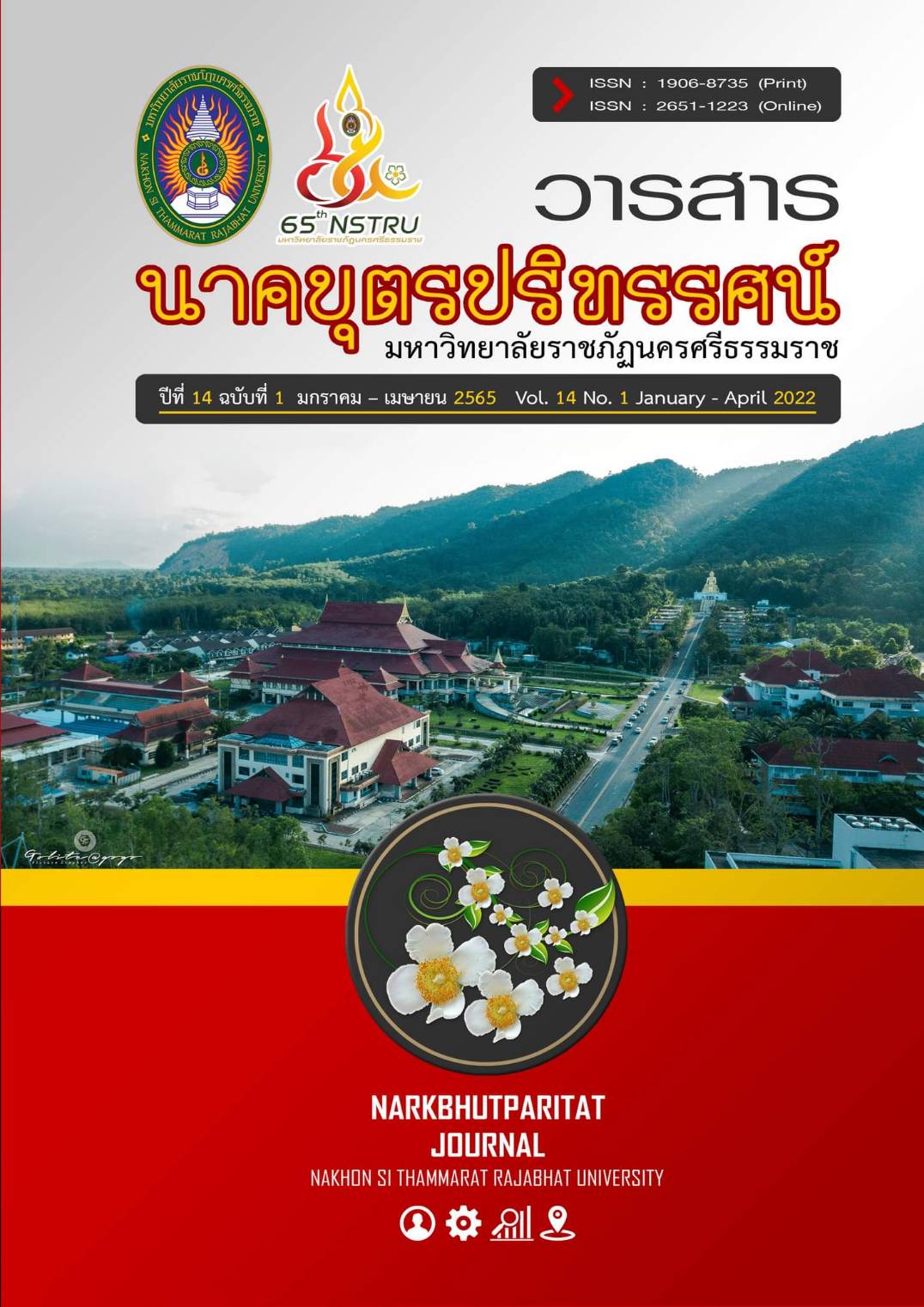A Study of Consumer Behavior and a Guideline for Khanom La Product Development of Community Enterprise Groups in Nakhon Si Thammarat Province
Main Article Content
Abstract
This research aims to study customer behaviors towards crispy Khanom La, traditional Khanom La, and Khanom La stuffed in Nakhon Si Thammarat Province, and propose a guideline for Khanon La product development. The population of this parcipatory action research comprised of a) a women’s community enterprise group for processed sweets, Tambon Pak Phun, Mueang district, Nakhon Si Thammarat, b) a community enterprise group for Khanom La products, Tambon Tha Som, Hua Sai District, Nakhon Si Thammarat, and c) a group of tourists who consumed Khanom La in Nakhon Si Thammarat. We visited the considered areas for data collection and collected basic information of the Khanom La production process from the community enterprise groups for supply chain analysis. We also collected the information from 35 tourists who consumed Khanom La, based on the structured interview questionnaire. For data analysis, there were two methods. For description data, content analysis was used to analyze consumer behaviors, while for quantitative data, crosstabs analysis was applied using a statistical program to determine results of Khanom La tasting and liking scores of the consumers.
The results showed that from 35 customers bought Khanom La due to colorful products, beautiful patterns, various flavors, sweet taste/and delicious, fragrant, clean and safe, freshness, and unique to the local area. Also, the objectives for buying Khanom La were to give souvenirs to others and use them in various ceremonies. Here, Khanom La with the original tasting was preferred and selected. Most customers bought Khanom La from souvenir shops, festivals, community shops, fresh markets or flea markets, local exhibition centers, and manufacturing sources. Secondly, The results of Khanom La tasting and liking scores of the consumers indicated that customer behavior was based on the customer’s age or generation. The customers in the Baby boomer and Gen X groups preferred Khanom La with banana stuffed. The customers in the Gen Y and Gen Z groups preferred Khanom La with chocolate stuffed. From this result, Khanom La with stuffed was preferred by the customers and It could be more responsive to the target customer market. It could increase value-added products and provide stable income to the local people in Nakhon Si Thammarat. Finally, we found from the customer behavior analysis, that customer behavior was changed according to the customer’s age or generation. The community enterprise groups had to adapt their midstream supply chain segments in the product processing process to support customer behavior and produce a new value chain and more income to the community enterprise groups.
Article Details

This work is licensed under a Creative Commons Attribution-NonCommercial-NoDerivatives 4.0 International License.
References
USA: Sage Publications, Inc.
Nakhon Si Thammarat Province Cultural Office. (2021). Khanom La Meaning. Retrieved 2021,
April 16, from https://www.m-culture.go.th. (In Thai)
Nunwadcharaton, P., Kuldilok, K., and Sukkumnoed, D. (2021). An analysis of the attributes of
crispy snakehead fish for consumer in Bangkok. Khon Kaen Agriculture Journal, 48(4), 749-762. (In Thai)
Office of the National Economic and Social Development Council. (2021). The Twelfth
National Economic and Social Development Plan”, 2017-2020, Retrieved 2021, April 16, from http://www.nesdc.go.th. (In Thai)
Pongnaras, N., klinraren, N., and Siriwong, P. (2017). The application of innovation for creating
value added and study the channel of distribution of Sumalee brand, Nong Hua RaetDistrict, NongBunmakAmphoe, Nakhon Ratchasima Province. The 2th RMU National Graduate Research Conference. (p. 342-349). (In Thai)
Poonperm, R. (2016). Food consumption behaviors of family in the community of
Phramongkutklao Hospital personnel’s Residence.Journal of The Royal Thai Army Nurses, 17(2), 78-88. (In Thai)
Rattanaphan, M. (2013). Factors influencing the purchasing decision of Crispy Khanom La
products : Case study in Songkhla Province. The 4th Hatyai National and International Conference, Research for Thai Society Development, 251-259. (In Thai)
Sritisan, T. (2018). Supply chain of jasmine rice production from Thung Kula Ronghai.
(B.S. Thesis in Geography). Naresuan University. (In Thai)
Supbunto, N., Suparat, R., Yajaimun, C., Yajaimun, C., Satthaboon, P., and Pudphong, J. (2016).
Factors affecting behavior to OTOP Product: case study of food products, Phayao Province, Journal of Humanities and Social sciences, special edition, 230-237. (In Thai)
Tahom, U., Dhurata, S., Bungtong, C., and Wongsa, K. (2018). The Model for maximizing the
local food product Value of “Tampiangsongkruang” (Bamboo Shoot Mixed with Extra-ingredients) to Strengthen Ban Samet community economy of Nongtreng Sub-District, Krasang District, Buriram Province. Journal of Social development, 20(2), 35-61. (In Thai)
Vanichbuncha, K., and Vanichbuncha, T. (2019). Using SPSS for Window in data analysis. (31st
printing). Bangkok: Samlada. (In Thai)
Wuttigianggaikul, N. and Kessuvan, A. (2016). The study of consumption behavior, lifestyle and
factors affecting decision to purchase halal snack food in Indonesia. The 54th Kasetsart University Annual Conference, 2nd - 5th February 2016, (p. 704-712). (In Thai)


